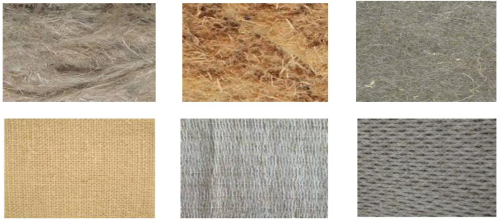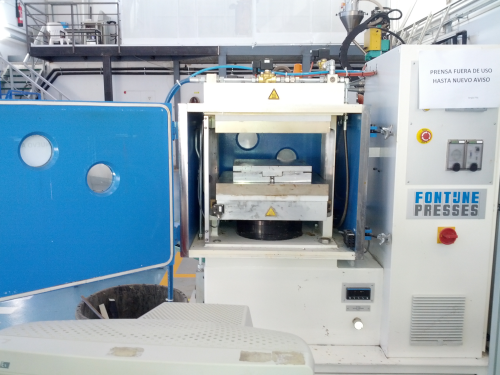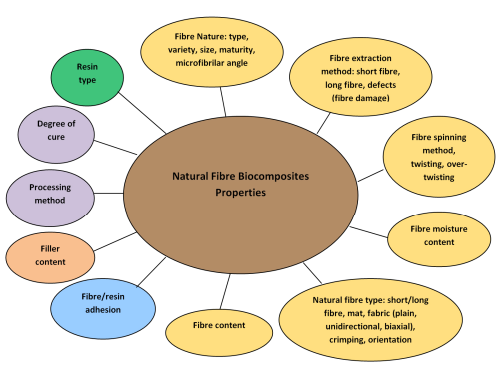






Nowadays, factors like the growing environmental conscience, legislative pressures, depletion of synthetic polymers and price rises, are driving companies to explore new materials for the development of products traditionally made from petroleum-based resins and fibres such as glass, carbon, aramid, etc., used as reinforcement. In this way, composite companies have developed different products based on more environmentally friendly raw materials.
Following this line of work, the Technological Research Institute of Plastics in Valencia, Spain (AIMPLAS), has collaborated with different companies on the development of bio-composites made from natural fibres and bio-resins for different application sectors.
Raw materials
Bio-composites are often defined as materials in which at least one of the components can be considered as bio-based. Matrices can be polymers, ideally those obtained from renewable resources like vegetable oils, furan resins and starch or produced by microorganisms (polyhydroxybutyrate, PHB), although petroleum-based polymers are predominantly used (virgin or recycled, thermoplastic or thermosets).
Figure 1 shows the chemical structures for different bio-based and petroleum-based polymers.
Regarding reinforcements, not only can natural fibres from plants such as cotton, flax, hemp, jute, etc. be used in combination with polymers, but also fibres from recycled wood, paper residues or by-products from plant crops like rice husk.
Figure 2 shows some natural fibres that can be used as reinforcement of bio-composites.
Processing methods
For the production of bio-composites, different techniques can be used depending on the raw material, the required product geometry, properties, processing time and cost.
Thermoplastic bio-composites can be mainly processed through compounding, extrusion, injection, compression moulding and vacuum consolidation. On the other hand, thermosetting bio-composites are manufactured by hand lay-up, vacuum assisted resin transfer moulding (VARTM), vacuum bagging, resin transfer moulding (RTM), compression moulding (Figure 3) and pultrusion.
Mechanical properties
Different factors can influence a bio-composites' performance. In the case of those reinforced with natural fibres, the main aspects to be considered are summarised in Figure 4.
Regarding thermoplastic bio-composites, Table 1 describes the mechanical properties of two laminates prepared by compression moulding of polypropylene (PP), polylactic acid (PLA) and reinforced with flax woven fabrics.
In the case of composites based on natural fibres and thermosetting resins there are a great number of studies where the mechanical properties of bio-composites are described.
Table 2 shows the mechanical properties of different flax fabric structures and thermosetting resins processed by resin transfer moulding (RTM).
Applications
Bio-composites obtained from both petroleum-based and bio-based resins that are reinforced with natural fibres have gained interest in the past years. Some examples of bio-composites that are currently used in different applications include interior parts for the automotive industry, electrical/electronic devices, sporting goods, and products for the building industry.
Regarding new applications of bio-composites, extensive work is currently being done by many companies and research institutes with natural fibre fabrics and polymers in order to develop parts for different sectors like shipbuilding, automotive industry, mass transit, street furniture and the energy industry. Products include a grit container from CEMO, an electric car charging station from CPD CAR PARTS DESIGN (Figure 6), and an interior panel from the CAYLEY project.
As it can be seen from this, many of the new applications for bio-composites are targeted to different means of transport.
This is the case of the panels that are being developed in the CAYLEY project. CAYLEY (Industrial Implementation for new Flat Panels from Renewable Polymers and Natural Fibre Reinforcements for the Aeronautical Industry) is a CIP-EIP-Eco-innovation project funded by the EACI that gathers a European consortium of composite experts from the companies Boeing Research and Technology Europe, INVENT GmbH, Lineo NV and AIMPLAS. The project's aim is the industrial implementation of environmentally friendly panels which are based on renewable polymers or recyclable thermoplastic sheets and natural fibres.
These panels can be used, for example, as sidewalls, ceilings, fairings, compartments in the interior of aircraft, trains, buses, ships, etc. The panels do not contain the hazardous materials used in traditional panels (e.g. phenolic resins and glass fibres) and are light-weight, which helps to save fuel by reducing the mass of the vehicles. Their lightweight, along with the possibility of environmentally friendly recycling processes at the end of the panel’s life cycle is important for ecologically compatible products. ♦





